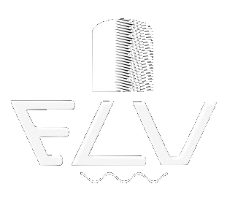Preparation of nanopowders
Preparation of nanopowders
Preparation of nanopowders
Preparation of nanopowders
Obtaining and studying the properties of highly dispersed powders of various materials is an actual section of modern science and technology.
Firstly, it is conditioned by the practical necessity to create new materials, which in some cases is possible only with the use of powder-like components; secondly, the problem of studying very small particles, especially those with sizes of the order of 100 nm and less, is a part of a more general fundamental field of knowledge called nanotechnology.
The production of nanopowder using an electron accelerator is carried out by evaporation from the condensed phase of the material by an electron beam, followed by condensation in the form of nanoscale particles.
Firstly, it is conditioned by the practical necessity to create new materials, which in some cases is possible only with the use of powder-like components; secondly, the problem of studying very small particles, especially those with sizes of the order of 100 nm and less, is a part of a more general fundamental field of knowledge called nanotechnology.
The production of nanopowder using an electron accelerator is carried out by evaporation from the condensed phase of the material by an electron beam, followed by condensation in the form of nanoscale particles.
At present, a unique scientific installation for the creation of nanopowders is functioning at the BINP.
The facility is based on the ELV-8 accelerator with parameters: energy 1 - 2.5 MeV, current 50 mA, power 70 kW.
The photo shows samples of nanopowders obtained at the installation: 1 - Microphotograph of SiO2 powder.
(particle size - 1-50 nm; surface - up to 180 m2/g);
2a,b - nanosized silver powders.
The facility is based on the ELV-8 accelerator with parameters: energy 1 - 2.5 MeV, current 50 mA, power 70 kW.
The photo shows samples of nanopowders obtained at the installation: 1 - Microphotograph of SiO2 powder.
(particle size - 1-50 nm; surface - up to 180 m2/g);
2a,b - nanosized silver powders.
At present, a unique scientific installation for the creation of nanopowders is functioning at the BINP.
The facility is based on the ELV-8 accelerator with parameters: energy 1 - 2.5 MeV, current 50 mA, power 70 kW.
The photo shows samples of nanopowders obtained at the installation: 1 - Microphotograph of SiO2 powder.
(particle size - 1-50 nm; surface - up to 180 m2/g);
2a,b - nanosized silver powders.
The facility is based on the ELV-8 accelerator with parameters: energy 1 - 2.5 MeV, current 50 mA, power 70 kW.
The photo shows samples of nanopowders obtained at the installation: 1 - Microphotograph of SiO2 powder.
(particle size - 1-50 nm; surface - up to 180 m2/g);
2a,b - nanosized silver powders.
At present, a unique scientific installation for the creation of nanopowders is functioning at the BINP.
The facility is based on the ELV-8 accelerator with parameters: energy 1 - 2.5 MeV, current 50 mA, power 70 kW.
The photo shows samples of nanopowders obtained at the installation: 1 - Microphotograph of SiO2 powder.
(particle size - 1-50 nm; surface - up to 180 m2/g);
2a,b - nanosized silver powders.
The facility is based on the ELV-8 accelerator with parameters: energy 1 - 2.5 MeV, current 50 mA, power 70 kW.
The photo shows samples of nanopowders obtained at the installation: 1 - Microphotograph of SiO2 powder.
(particle size - 1-50 nm; surface - up to 180 m2/g);
2a,b - nanosized silver powders.
